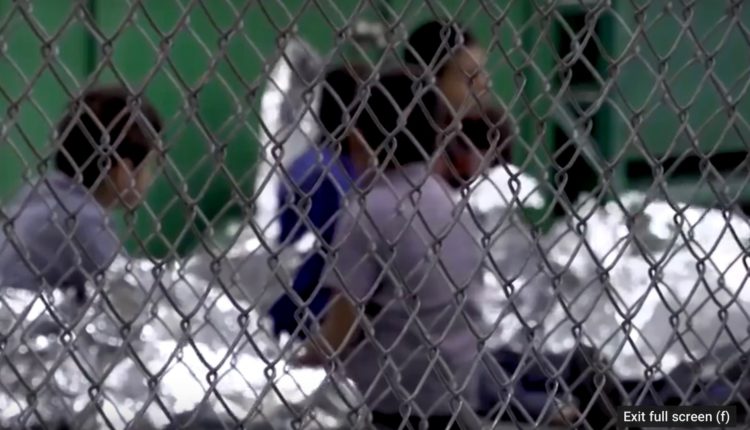
Deport, deny, destroy
Secretary of the Department of Homeland Security (DHS) Kirstjen Nielsen, citing a “system-wide meltdown” at the U.S.-Mexico border, is asking Congress for additional money, wider authority, and permission to deport “unaccompanied” children seeking asylum.
The president asks the Congress to deny Puerto Rico—and only Puerto Rico—additional money for food and infrastructure as it considers a bill to help areas across the country recently struck by natural disasters. The president also threatens to “close the border” with Mexico, a move that would virtually destroy much of the economy along both sides of the Rio Grande and hurt American farmers, businesses and workers far from the border.
Finally, the president proposes to cut off U.S. foreign aid to the immigrant-sending countries of Guatemala, Honduras and El Salvador, aid in part intended to improve the conditions that push families to flee Central America bound for the United States.
This series of requests, threats and proposals have at least two aspects in common. First, they are, like the plan to cut aid to the triangle of Central American countries, the “cut off your nose to spite your face” policies typical of this administration, policies bound to accomplish the reverse of announced goals. Even more damaging would be shutting down the border. It is totally inconsistent with Trump’s goal of strengthening the U.S. economy. Trade across this border is $1.7 billion—per day. Multiply that by 365 days a year and, even by the standards of the giant U.S. economy, we are talking real money here. Many jobs would be lost, and many businesses would go under as a result—on this side of the border.
Second, the sum of these policies betrays an administration-wide attack targeting people and countries that white nationalists, among other Americans, consider not only in geographic but also in terms of culture and human worth, “beneath the United States.” These countries that José Martí famously called Our America have borne the brunt of the president’s anti-immigrant rhetoric since before day one of his administration. They are a subset of Trump’s shithole countries, which also include all of Africa and much of Asia. Significantly, these latter regions are basically the same ones that, after the racist 1924 National Immigration Quota Act, were declared a “barred zone,” an area from which no immigration into the United States was allowed.
The “meltdown” and the “crisis” about which administration officials, from the president down to the secretaries of Homeland Security and State, are furiously sounding alarm bells are not just fake crises. They are not a bug in the system but a feature of the program. Trump wants to make the new “immigration normal” to be the same as the old immigration normal that existed between 1924 and the 1965 immigration reform, a period of racist exclusion.
To implement such a brutal program in the face of new realities—globalization of trade, manufacture and migration, for example, and the new demographics of the U.S. electorate and political leadership—inevitably generates big problems. An administration interested in immigration only as far as what it can do to stop it is incapable of simultaneously regulating and administering it in a legal, rational and humane way.
The judicial system has been screaming this message at the administration through multiple rulings that have invalidated and frustrated key aspects of Trump’s exclusionary project. The administration does not want to hear or abide by it, however. Its response to the failure of an immigration policy based solely on enforcement and exclusion is to double down. As I write this, news is coming out about the latest DHS actions, deploying more enforcement boots to the Mexico border and cracking down further on asylum seekers.
These measures too are likely to fail. The forces driving migration are strong. How far is Trump and his reactionary, sycophantic inner circle of power willing to go to accomplish goals that are both cruel and unrealistic?
The record of this administration is that, faced with a strong obstacle, there is no place too low to go if it can get away with it. To the extent that it has been rescinded, the practice of separating families and caging children was not stopped as a result of a sudden burst of conscience in the heart of the heartless—Trump and his complicit cabinet. It was stopped because of ferocious pushback from many sides, and Trump’s belated awareness of the terrible television optics these practices inevitably generate.
There is a clear lesson. The Trump administration never ceases to push the envelope. The only strategy against that is to push back harder and knock it on its rear. Even then, we can’t let up for one second. This president is a slow learner. The Republicans lost an election because they tried to mess with Obamacare. Now Trump, incredibly, is trying to take another bite at that poisoned apple, right at the start of the next electoral campaign.
The GOP knows that this is suicidal, but it is more afraid of Trump’s rabble (his “base” for commentators too “civil” call that group of horse’s asses a mob) than they are of the political equivalent of the Grim Reaper. So, once Trump and his administration are on the floor, we need to stand over them and prevent them from getting up again.


